We were talking about our recent Alaskan cruise with friends and one remarked that the image I had shared on Facebook of the Bridal Falls waterfall in Keystone Canyon near Valdez seemed fuzzy and blurry and why had I posted that one? Interesting – it is always best to pay attention to non-photographers and it made me think about a post I had recently read on Alessandra Chaves’ blog “It’s all about the light” about the need for photographers to ask themselves what they are trying to achieve with a photograph and, in particular, what emotion they want to elicit. This discussion with my neighbor points to a third question – and did the viewer actually see that in the final image?
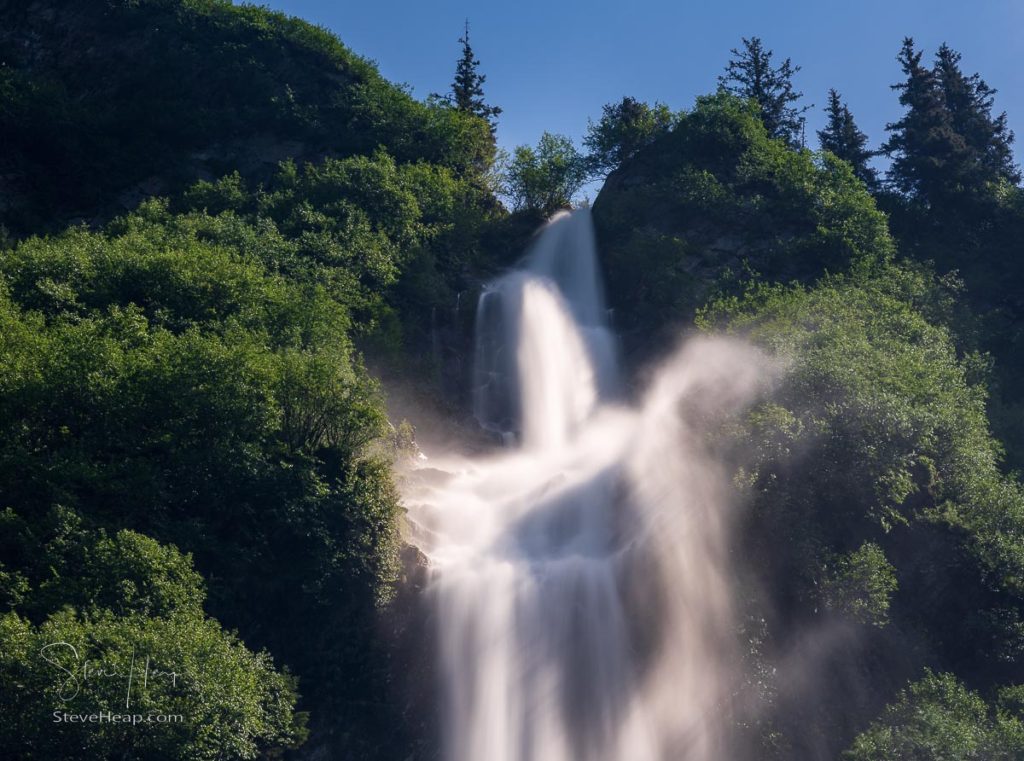
This was the image in question and, of course, the water in the falls is fuzzy and blurry – by design in my mind. This is called the Bridal Veil falls because the overall impression in real life is of fine spray and, coupled with the wind, a never-ending set of fine shapes in the water that are not unlike a veil. And so my approach that day was to try to capture that and make it seem like this was fine silk and slightly translucent. That normally means using a slow shutter speed so that, instead of capturing sharp images of water flowing down the mountain, the water blurs as the shutter remains open but the rest of the image is sharp. In bright sunlight this is quite tricky as the light is so strong, but with something called a Neutral Density filter – essentially a very dark piece of glass – you can end up with the shutter being open for 1-2 seconds or so. This particular shot was around half a second.
The whole waterfall looks like this next image:
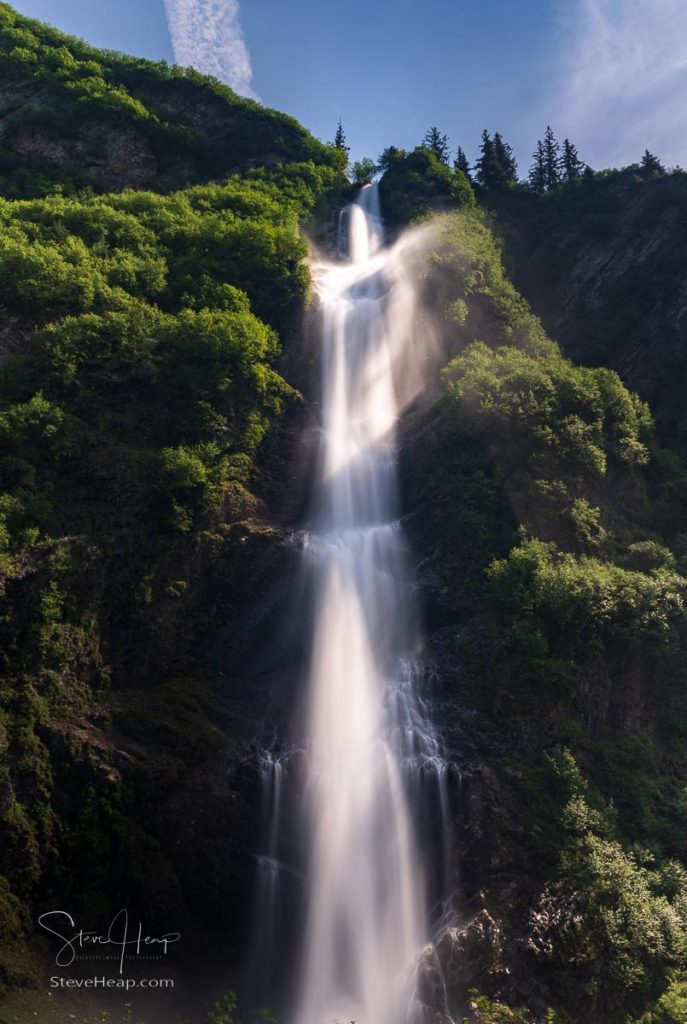
This image had a two second exposure and so you see the blurred main flows of water and also the smaller ones that are running down the rock itself behind that cascade. It is hard to imagine, seeing this in the bright sunlight on a warm day, that this is the scene of a major ice climbing competition in the winter – I would love to see that and no need for slow shutter speeds when the whole waterfall is frozen solid!
I experimented with close up images of sections of the waterfall as well:
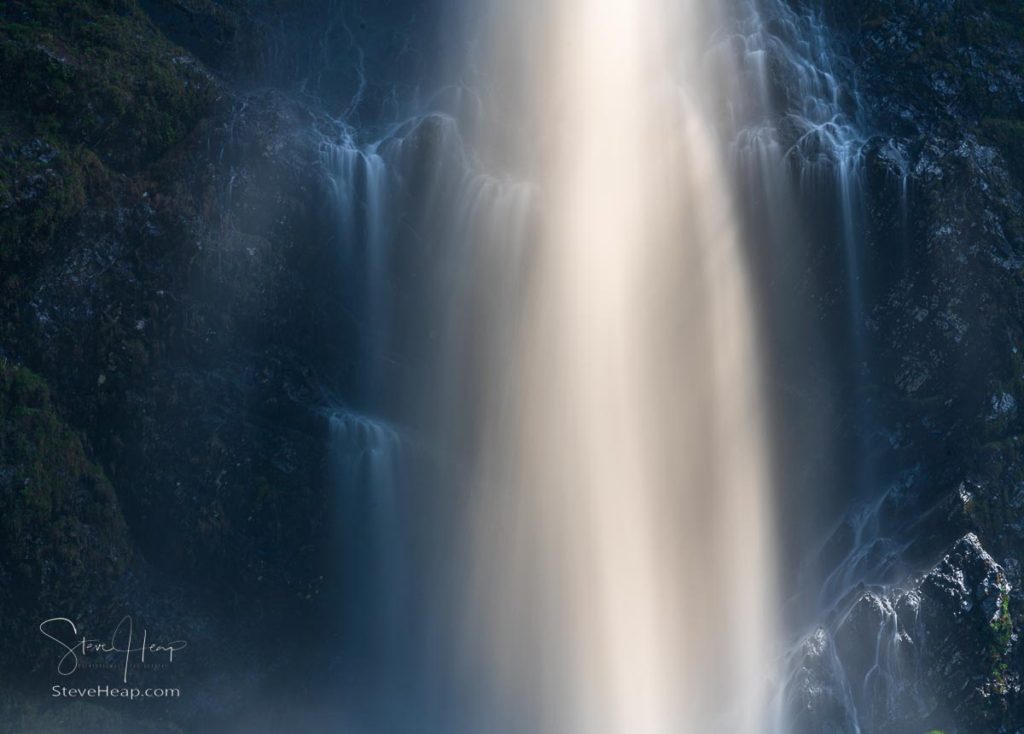
From the side, the full height of the waterfall can be appreciated:
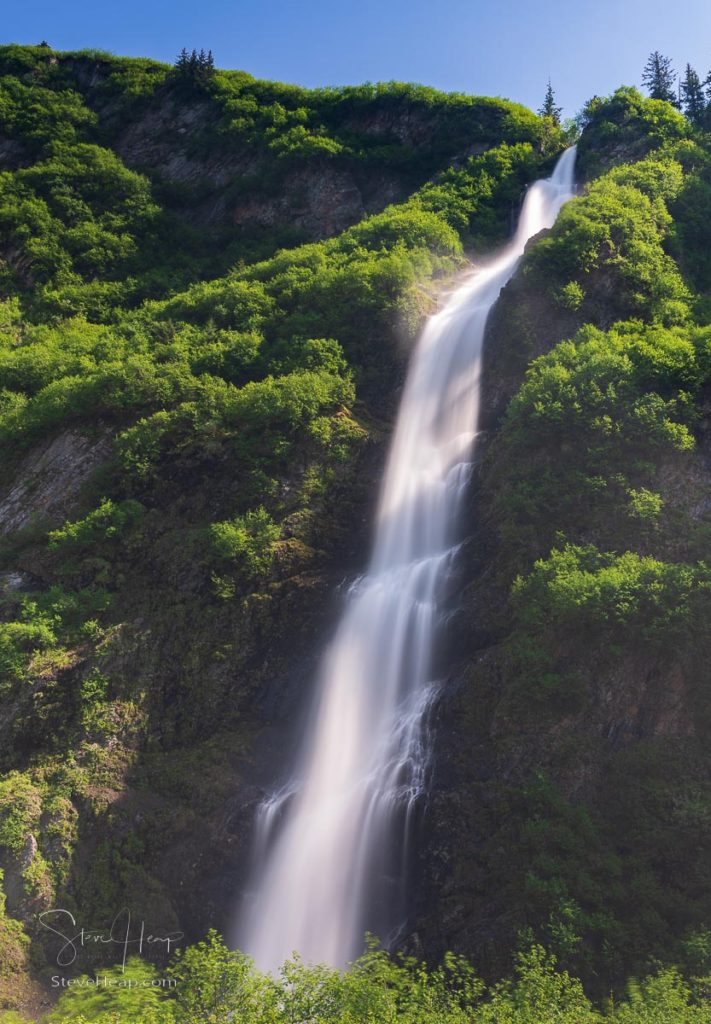
But to end with the same question – I had planned to show how this waterfall got its name with the approach I took, but it didn’t seem to hit the mark with this particular viewer. Perhaps we are so used to pin sharp images from our phones that anything other than that seems to be a mistake. I liked them and they did achieve (for me) what I was looking for, and maybe that is all a photographer can really hope for in the end!
You can read about the rest of our visit to Valdez on the Viking Orion cruise in June 2022 in this story, or visit this page to continue the adventure with a visit to the Hubbard Glacier.
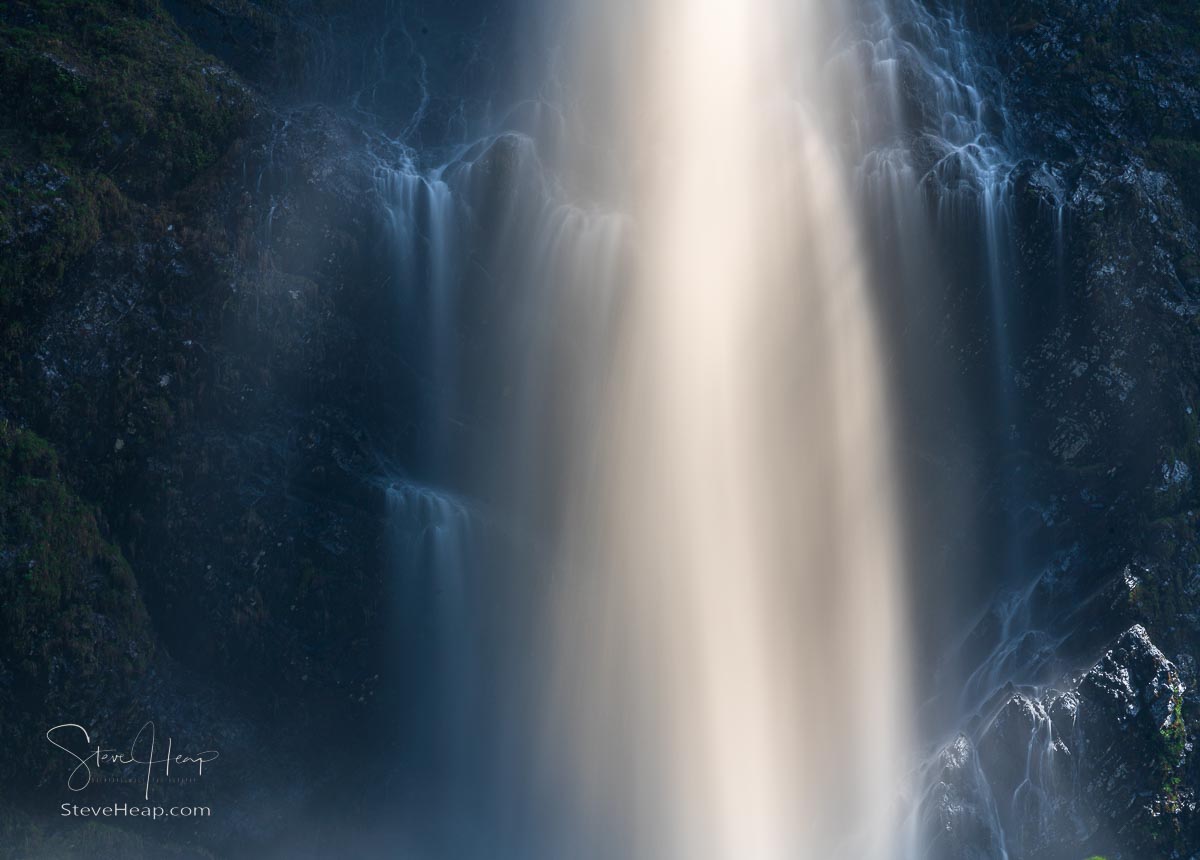
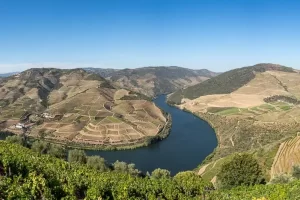
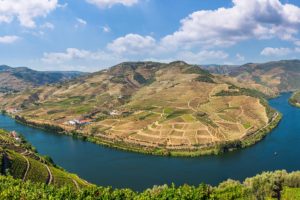
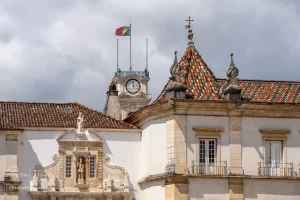
Alessandra Chaves
23 Jun 2022I believe that you have achieved your goal. The waterfall does look like a bride’s veil. Maybe offering the viewer a sharp image to buy if that rings more with that experience. Thanks for the mention.
Steve Heap
23 Jun 2022Good idea. It would also be good if I put some of these online in my print portfolio!
Louis Dallara Fine Art Photography
25 Jun 2022Great topic, I always struggle with the correct answer to that question. Soft or Sharp?
Most online self-taught experts say “Long Exposure” is best and go into great depths on how to achieve it with ND filters etc.
That gives that soft, silky look that the photogs like.
I sometimes like the sharp image, it depends on the light etc. on what works best.
Now the question of what are you doing with the image?
Is Selling or Personal collection?
In my marking, research says people don’t like soft images and think they are out of focus (OOF)
But my preference is soft focus.
I haven’t sold any waterfalls photos. lol
Steve Heap
25 Jun 2022I almost always do waterfalls with a longish exposure – of course all of the rest of the image is sharp – just the water is blurred! I’ve not really come across a waterfall that looked at its best with sharp water – perhaps there is one somewhere! I’m going to upload all these various images to stock sites once I have keyworded them and then choose the best ones for my Print on Demand sites. I have sold some waterfalls from a local river in the past, and they have sharp rocks and soft water! Thanks for your comments, Louis!
Bob Decker
26 Jun 2022I tend to prefer and shoot the smooth, cottony style when shooting moving water. Sometimes I’ll make an exception depending on conditions and the story I trying to tell. Nice article and accompanying photos.
Steve Heap
26 Jun 2022Thanks Bob – I do have one regular image of this waterfall taken at 1/250th second and it is still a bit cottony because of the amount of water coming down, but it is not a representative, in my view, of the way the waterfall looked at the time.
Louis Dallara Fine Art Photography
26 Jun 2022I love your waterfalls, wish there was one close by. 🙁
Steve Heap
26 Jun 2022I’m lucky to have these smaller ones just up the road from where I live: https://www.backyardimage.com/the-waterfalls-on-deckers-creek/
Anne
12 Jul 2022What a great image of bridal veils falls that is. I also photograph waterfalls from time to time but take the opposite approach, It may be unfashionable at the moment but I like to see splash. When there is enough light then its a fast shutter speed for me however I do champion every photographers right to do their art their own way 🤣
Steve Heap
12 Jul 2022I look for cloudy days for waterfalls – you look for sunny ones!